- Take Action: Urge Congress to End Federal Cannabis Prohibition
Select a State
- Alabama
- Alaska
- Arizona
- Arkansas
- California
- Colorado
- Connecticut
- Delaware
- District of Columbia
- Florida
- Georgia
- Hawaii
- Idaho
- Illinois
- Indiana
- Iowa
- Kansas
- Kentucky
- Louisiana
- Maine
- Maryland
- Massachusetts
- Michigan
- Minnesota
- Mississippi
- Missouri
- Montana
- Nebraska
- Nevada
- New Hampshire
- New Jersey
- New Mexico
- New York
- North Carolina
- North Dakota
- Ohio
- Oklahoma
- Oregon
- Pennsylvania
- Rhode Island
- South Carolina
- South Dakota
- Tennessee
- Texas
- Utah
- Vermont
- Virginia
- Washington
- West Virginia
- Wisconsin
- Wyoming
Menu
Blog
- Blog
California Supreme Court Further Clarifies Medical Marijuana Laws
Jan 21, 2010
The California Supreme Court affirmed today that the state's voter-approved medical marijuana law (Proposition 215) does not prevent qualified patients and caregivers from possessing more marijuana than is set forth in the personal guidelines established by the legislature in 2004. While the outcome of this case, People v. Kelly, hasn't fundamentally changed California law -- not in our view, at least -- the decision provided necessary direction for law enforcement.
Although his status as a legal…
Read more
Dave Schwartz on 'Face to Face' Part 2
Jan 20, 2010
MPP Nevada spokesman Dave Schwartz debates the merits of the ballot initiative proposed for 2012 that would allow Nevadans over the age of 21 to legally purchase and possess marijuana in small quantities. This is part two of an appearance on Jon Ralston's "Face to Face". 01/15/2010
Read more
Dave Schwartz on 'Face to Face' Part 1
Jan 20, 2010
MPP Nevada spokesman Dave Schwartz debates the merits of the ballot initiative proposed for 2012 that would allow Nevadans over the age of 21 to legally purchase and possess marijuana in small quantities. This appearance is on Jon Ralston's "Face to Face". 01/15/2010
Read more
Why didn’t the Democrats embrace marijuana reform in Massachusetts?
Jan 20, 2010
Last night, Scott Brown (R-Mass.) beat Democrat Martha Coakley in a special election to replace the late Senator Ted Kennedy, becoming the first Republican to hold a Senate seat in Massachusetts since the 1970s. So what happened up there?
To state it simply, the Democrats chose a bad candidate. They backed one of the most vocal and public opponents of the MPP-funded ballot initiative, Question 2, which decriminalized marijuana possession in Massachusetts in 2008. Question 2 was more popular than…
Read more
Aaron Smith on CNBC
Jan 19, 2010
MPP California Policy Director Aaron Smith appears on CNBC to discuss AB390. He debates with other guests about the benefits of a system that allows the taxation and regulated distribution of marijuana to adults 21 and over. 01/13/2010
Read more
New National Poll Shows Dramatic Increase in Support of Marijuana Reform
Jan 19, 2010
A new ABC News/Washington Post poll reveals that more than eight in 10 Americans (81%) support efforts to make marijuana legal for medical use, up from 69 percent in 1997. Fifty-six percent say that if it's allowed, “doctors should be able to prescribe medical marijuana to anyone they think it can help.” Last week the New Jersey state legislature passed a medical marijuana bill and yesterday Gov. Corzine signed the bill into law, making New Jersey the 14th state to provide its sick and dying patients…
Read more
New Jersey Medical Marijuana Law Signed, But No Pardon For Convicted MS Patient
Jan 19, 2010
Last night, New Jersey Governor Jon Corzine signed a medical marijuana bill into law, officially making New Jersey the 14th state in the nation to allow qualified patients to use medical marijuana with their doctor’s recommendation. The law allows the establishment of dispensaries around the state, but it does not make it legal for patients to grow their own marijuana.
This law means that New Jersey will no longer prosecute sick and dying patients who try to ease their symptoms with marijuana, but…
Read more
Seattle’s New City Attorney Will Dismiss All Marijuana Possession Cases
Jan 18, 2010
Pete Holmes, the newly elected Seattle city attorney, is already making good on his campaign promise to dismiss any marijuana possession charges that come through his office, the Seattle Times reported last week. Holmes dismissed two marijuana-related cases on his first day on the job, and several others are about to be dismissed, including cases taken up by the previous city attorney.
According to the Times, Holmes’ predecessor, Tom Carr, had continued to prosecute low-level marijuana arrests even…
Read more
Washington State Voters Support Taxing and Regulating Marijuana
Jan 18, 2010
A new poll released by Survey USA found that 54% of Washington voters support taxing and regulating marijuana like alcohol, and selling the natural plant in state-run liquor stores. When asked broadly if voters “think legalizing marijuana is a good idea,” support was even higher at 56%.
Last month two Washington state legislators submitted a bill to tax and regulate marijuana like alcohol. A few days later Seattle Mayor-elect Mike McGinn came out publicly in support of ending marijuana prohibition…
Read more
New UK Drug Adviser Said Marijuana Should Be Legal
Jan 15, 2010
Back in October, the British government fired its chief drug adviser, Prof. David Nutt, for saying that marijuana is less dangerous than many legal drugs and that British laws should be changed to reflect this reality. Many other members of the United Kingdom’s Advisory Council on the Misuse of Drugs resigned in protest
Then this week, Les Iversen, a former pharmacology professor at the University of Oxford, was announced as Nutt’s interim replacement as the council’s chairman. And guess what? He’s…
Read more
Advisory Council on the Misuse of Drugs, Britain, David Nutt

